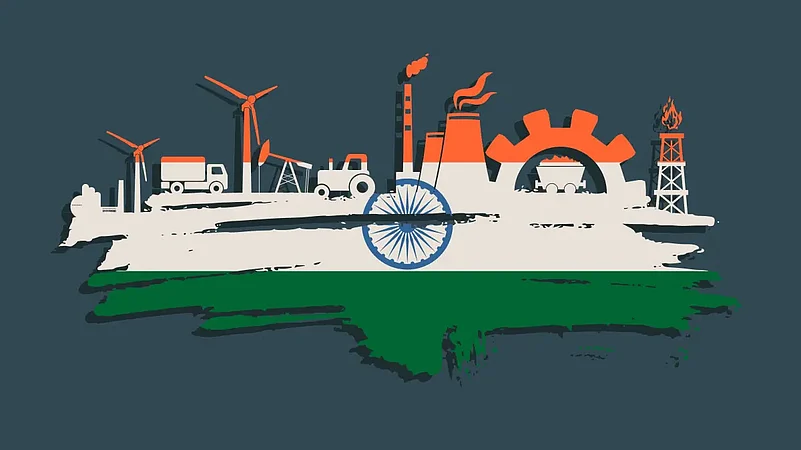Risks to global growth are amplifying as we enter 2023. S&P Global is forecasting world gross domestic product (GDP) growth to slip to 2.2 per cent in 2023 from 3.4 per cent in 2022. The slowdown is even more acute when seen from the vantage of 2021, when global growth posted 5.7 per cent.
That growth would slip—with geopolitical issues at play and global central banks sharply raising the cost of borrowing—was known. But where there is still uncertainty is the depth and the length of the slowdown, especially in countries leading the deceleration—mainly the US, the EU, the UK, and China.
Advertisement
India’s economic growth will inevitably slow as well, as the countries at the forefront of the slowdown are some of our larger trading partners.
Indeed, India’s growth cycle has shown high synchronicity with advanced countries, with deepening of trade and financial sector linkages over the years. Thereby, we cannot avoid the short-term pain of a sharp slowdown in advanced countries. The fallout is already being seen in industrial activity.
Consequently, CRISIL recently revised the country’s GDP growth forecast downwards to 7.0 per cent for the current fiscal from a previous estimate of 7.3 per cent.
Still, domestic demand remained supportive for the better part of this fiscal—helped by a catch-up in contact-based services, government capital expenditure (capex), relatively accommodative financial conditions, and overall normal monsoon for the fourth time in a row.
Advertisement
But the resilience of domestic demand is now being put to the test. Demand is expected to wane in the coming months as some of the one-time-lift effect, especially in contact-based services, begins to fade and higher interest rates bite. Exports are likely to see a bigger hit next year. For fiscal 2024 therefore, CRISIL has revised down India’s GDP growth forecast to 6.0% from 6.5% estimated previously.
That said, high frequency indicators suggest that although the overall growth momentum is slowing, the pattern of growth is uneven across sectors. For instance, export-oriented sectors such as textiles, leather, gems and jewellery, engineering goods and some of our services exports could face a larger hit than others. This is because put together, the US, the UK, the EU and China comprise ~42 per cent of our merchandise exports (2021), while the US, the UK and the EU account for majority of our IT/ITeS exports.
However, with government infrastructure capex expected to remain strong in the current and next fiscal, sectors that complement infrastructure activities—such as steel and cement—are likely to hold up as well. In fact, the government’s role in driving capex and creating an environment that crowds in private investment will remain crucial in the year of a slowdown.
Now let’s take a look at the private space. While demand will somewhat weaken at the overall level, capex is expected to be pick up.
Encouragingly for private capex, several factors have turned supportive, marking the start of a gradual, steady pick-up in the investment climate. Deleveraged corporate balance sheets and improved bank appetite to lend, are overall supportive to private investments. In the manufacturing sector, with capacity utilisation on an improving trend, investments are expected to gradually start picking up, too.
Advertisement
Then again, sectors that are supported by the government’s Production Linked Incentive scheme, such as automobiles, solar energy, pharmaceuticals, and electronics, are likely to see increase in investment activity as the scheme enters its second year of full-fledged implementation.
But not all sectors are firing in unison.
Some pockets that could see slower consumption demand are sectors such as housing, consumer durables, consumer services, such as travel, tourism, hospitality, etc. In these, while some would see the impact of fading one-time-lift effect, in others such as housing and consumer durables, faster pass-through of higher interest rates could take the steam off demand.
Advertisement
A protracted Russia-Ukraine war and uncertainty on crude oil and commodity prices, and the global slowdown impacting India’s exports could put some private capex plans on the back burner, curtailing higher overall investment growth. Then there is slow recovery in consumption demand, which will also keep capex from picking up substantially in the near term.
But the medium-term outlook is more upbeat. India is expected to remain an outperformer. CRISIL expects the country’s GDP growth to average 6.6 per cent in fiscals 2025 and 2026 vis-à-vis the International Monetary Fund’s forecast of 3.1 per cent global growth over this period. Stronger domestic demand—mainly led by an improving capex environment—will drive India’s growth premium over its peers.
Advertisement
(The views of the author are personal.)















 Just one email a week
Just one email a week